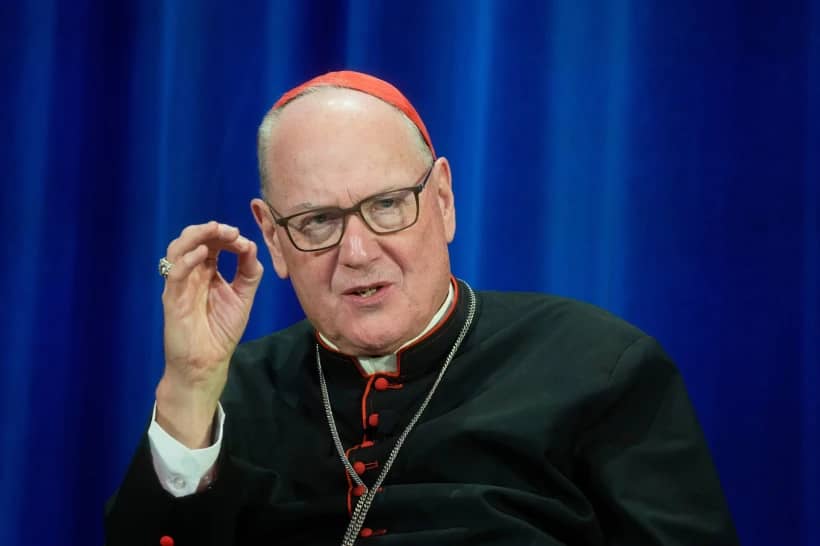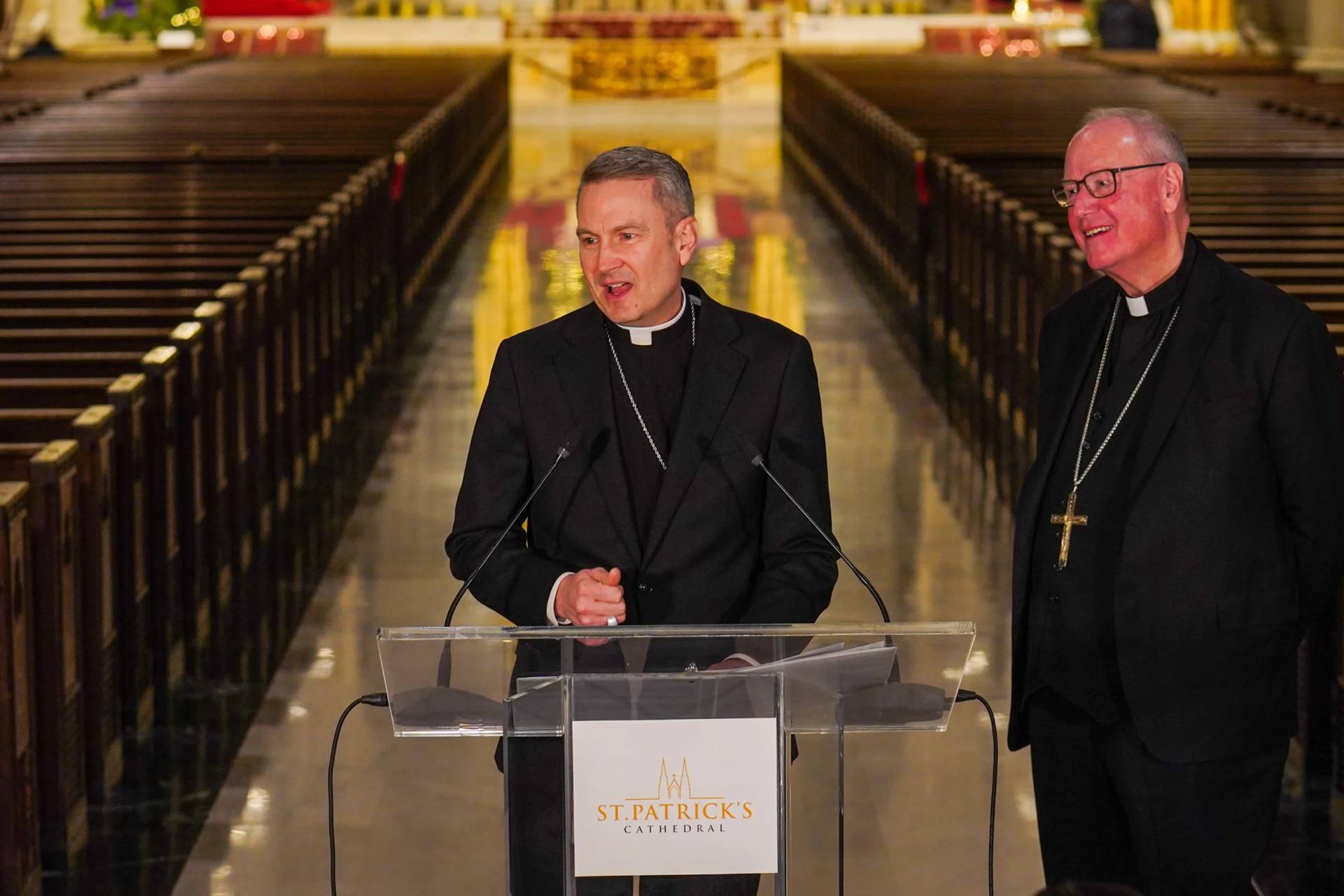NEW YORK – Days after the publication of the final document for the North American phase of the 2021-2024 Synod on Synodality, leaders of the continental synod efforts want U.S. Catholics to keep in mind that the process is not over, as it’s a “generational project” that will take time.
“We need to be patient, and we need to really engage what discernment means,” Julia McStravog, co-coordinator of the North American Synod Team told Crux. “The goal isn’t just the documents or the meetings, it’s really about the spiritual formation of people to be synodal, to look at one another through a lens of spiritual friendship and treat each other that way.”
Published on April 12, the final document for the North American phase of the synod, reflected many of the themes that were expressed throughout the synod process: Calls for greater co-responsibility in the church, particularly for women and young people, greater inclusivity of those on the margins, a reimagining of faith formation, and further steps towards accountability and transparency.
Along those lines, the document leaves five priorities for participants to discuss at the first session of the Synod of Bishops in Rome from Oct. 4-29, and to then discuss at a second gathering in October 2024, which will conclude the formal Synod on Synodality process. Those priorities are:
- Integration of synodal consultation in the local churches.
- The challenge of welcoming those who feel excluded from participation in the life of the Church in a manner that is authentic and faithful to the Gospel.
- Co-responsibility.
- Addressing the unity and communion of the Church in the midst of various kinds of polarization and division.
- A Church that goes out to the peripheries.
Bishop Daniel Flores of Brownsville, chair of the U.S. Bishops’ Conference Committee on Doctrine, and Bishop Raymond Poisson of Saint-Jérôme-Mont-Laurier, Quebec, who both led the North American synod team presented the final document at the Vatican on April 12. The document, along with those of the six other continental assemblies, will be used to create “Instrumentum Laboris,” the global synod working document that will be released in June.
Following the publication of the final document, Flores said there’s an opportunity for the local church to continue the synodal process while the Church awaits the next steps of the formal process from Rome.
“While we await the next steps of the formal process to be carried out in Rome, we have an opportunity to make synodality truly present among us here in North America. We invite you to discern prayerfully the joys, laments, and tensions raised in this Final Document and discern together how you can make present the first fruits of synodality in your local community,” Flores said.
To create the final document, the North American synod team organized twelve virtual assemblies – seven in English, three in Spanish, and two in French – for delegates from the United States and Canada. There were 931 delegates that included 391 law women, 77 women religious, 235 lay men, 76 deacons, 148 priests and 4 non-ordained men religious. 146 bishops from the two countries also participated.
In each virtual assembly delegates broke out into small groups for a discussion, the fruits of which were then shared when everyone returned to the larger group. The virtual format was chosen to accommodate as many delegates as possible, which some people appreciated for that reason, while others held the opinion that the spiritual conversations suffered due to a lack of in-person dialogue.
After the completion of the 12 virtual assemblies, representatives from each met with the North American synod team, which was tasked with writing the report. For the composition of the document, the North American Synod Team went on a weeklong retreat in February. The group consisted of eight bishops, three laywomen, two priests, two laymen, and two women religious.
After the document was drafted, it was sent to 25 delegates each from the U.S. and Canada for comments. The final document was approved by bishops designated by each episcopal conference.
One consistent feedback from the delegates, according to the document, was the need for greater co-responsibility in the Church, specifically for young women and young people. The report states that delegates proposed an examination of roles for women in the Church, including decision-making roles, leadership and even the often-debated topic of ordination.
Another desire of many delegates was for greater inclusivity of marginalized groups that feel unwelcome in the Church, including immigrants, racial or linguistic minorities, LGBTQ+ persons, divorced and remarried Catholics, and those with varying degrees of physical or mental abilities.
Other calls included the need for the Church to take additional steps to regain trust and credibility through addressing historical wrongs including the clergy sex abuse crisis, and its role in operating residential/boarding schools for Indigenous people.
Delegates also were said to have expressed a desire for a reimagining of faith formation, that includes not only the fundamental teachings of the faith, “but also formation for synodality, co-responsibility, welcoming, and going out to the peripheries.”
“It was recognized that for the Church to be truly missionary – to go out to the peripheries and to evangelize – what is needed is holistic formation in our baptismal dignity and calling, in co-responsibility, and in synodality,” the report states.
There was also a section of the report dedicated to the bishops’ feedback on the synodal process. According to the report, the listening sessions led bishops to realize the structural challenges at the local level that could make maintaining a synodal style difficult. They also acknowledged that they “can and must” do a better job of consulting those on the margins of the Church and society.
However, the report also states bishops also expressed concerns that there are false expectations of what the synodal process is meant to be and produce. The bishops also noted that many of the faithful did not participate in the synod, and remain unsure of what their role is.
That again begs the question – what is next for the Synod on Synodality at the local level.
McStravog and Richard Coll, a North American Synod Team co-coordinator and executive director of the USCCB Department of Justice, Peace and Human Development, told Crux that the team plans to remain in contact with local synod leaders to help them implement feedback they heard during the local phase.
Coll emphasized that there’s no reason for the local synodal process to end.
“It doesn’t need to be in the context of preparing a document. It can be in the context of parish activities, diocesan activities, school activities, and so we’re hoping that we can continue to be of support to many who will try to continue to implement some of the fruits of that experience,” Coll explained. “There’s no reason why it shouldn’t be able to continue in different contexts and different settings.”
McStravog said the last line of the report, “the synodal process has not been perfect, but it has been good,” encapsulates the process so far, and work that still lies ahead.
“It is really important for people to understand that it’s not going to be everything all at once and that it is going to take time and we’re going to hone our skills and it’s going to get better as we move on,” McStravog said.
Follow John Lavenburg on Twitter: @johnlavenburg














